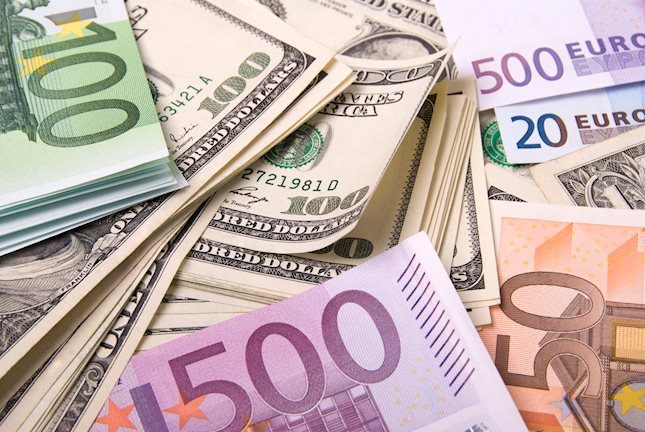Analysts at Brown Brothers Harriman explained that news that China's reserves approached $3 trillion at the end of the last year has spurred expressions of concern.
Key Quotes:
"Its reserves have fallen by roughly $1 trillion since peaking mid-2014. The irony that is lost on many investors is two years ago pundits were arguing that China had too many reserves and now some are claiming that their reserves are insufficient.
Insufficient for what? By most measures, they are more than adequate. The reserves are sufficient to cover imports for 18 months. The reserves are three times more than the short-term foreign debt obligations. China's reserves are insufficient if the current pace of drawdown continues.
The value of China's reserves fell by $832 bln in 2015-2016. At the current pace of reserve loss, in three and half years, China will not have any reserves. Of course, this is not going to happen. The IMF argues China's reserves are "adequate" provide capital controls remain. Those capital controls not only remain, but they have been expanded.
Some observers argue that the decline in China's reserves is equivalent to the amount of Treasuries it is selling.
This is simply not true.
China does appear to be reducing its Treasury holdings, but now where near the scale that has been suggested.
According to the US Treasury data, China's holdings of US Treasuries peaking in late 2013 near $1.32 trillion.
As of the end of October, which is the most recent data available, US Treasury estimates China's holdings of US government debt stands at about $1.12 trillion.
The pace appears to have picked up in recent months.
Of the roughly $200 bln decline in China's Treasury holdings, $125 bln took place since the end of May 2016. The change in bond prices probably had a limited impact over this period. Specifically, in June and July, the US 10-year yield, for example, fell 39 bp, but then rose almost as much in the August through October period.
Swings in foreign exchange values also impact the dollar value of China's reserves.
Many observers who discuss the decline in China's reserves tend to imply that it is purely a question of volumes. Yet changing prices cannot be ignored. The precise currency allocation of China's reserves are not known, but for the sake of this thought experiment, assume that in 2014, 20% of China's reserves were in euros. 500 bln euros. Since then the euro has declined by more than 20% against the dollar since 2014.
If nothing else changed, the dollar value of China's reserves would have fallen by more than $100 bln.
For the record, the value of US currency reserves is not even $100 bln.
The way many, if not most observers talk about the capital leaving China is that it is a form of capital flight. People are voting with their pocketbooks against the policies of the Chinese government. While there may be an element of that, we think that the situation is more complicated and less worrisome.
There are two legitimate outflows which many observers do not even cite, let alone estimate: paying back foreign currency borrowing and direct investment outflows.
Many Chinese companies borrowed dollars. The yuan was steadily appreciating. This combined with regulations encouraged those companies to swap from dollars to yuan. That inflated reserves. Once the yuan is not a one-way appreciation bet, and US interest rates begin rising, pressure builds to repay the debt. That seemed to account for around 2/3 of the capital outflows in 2015.
The calculations of 2016 are not complete, but the paying down foreign debt appears continued. Foreign directed investment outflows were averaging around $100 bln a year.
And although of a smaller magnitude, note that there are around 330k Chinese students in the United States. Due to various changes, most cannot get student loans. If each takes the new maximum the equivalent of $50k a year out of China is about $16 bln. And some students report that families can "borrow" from a neighbor's quota which might not be otherwise used.
This is not to deny that there are private capital outflows from China.
But the alarmist talk about the decline in reserves in unnecessary.
When the yuan was appreciating, and capital was pouring into China, officials made it easier to export savings. Now that it is experiencing capital outflows, it is liberalizing inflows.
Nor is this to deny that Chinese officials are in a tough position. If they step away from the intervention to support the yuan and let it fall, it would likely spur a speculative attack.
This would show up in the offshore yuan (CNH), which may be one of the reasons officials engineered the short squeeze there last week. A sharp decline in the yuan would likely exacerbate the rising trade tensions as it would increase the opportunity for China to export its surplus output. Also, a sharp devaluation would slow China's transition to a consumer-service economy.
The paying back the dollar loans is not an infinite process, but rather, even if extended, a one-off factor. Slowing outbound direct investment may be assisted numerous host countries are becoming somewhat less receptive to direct investment from Chinese companies, many of which are at least partly state-owned.
The situation is serious, but it is hardly an existential crisis for China. China's debt situation seems more pressing. All the capital outflows are not undesirable or unlimited. Moreover, capital controls can be adjusted. There may be no good options with the yuan.
Slowing the decline can be costly.
Allowing the full decline would be disruptive. Fortunately, unlike in the summer of 2015 or early 2016, global investors are not taking their cues from developments in China."
Information on these pages contains forward-looking statements that involve risks and uncertainties. Markets and instruments profiled on this page are for informational purposes only and should not in any way come across as a recommendation to buy or sell in these assets. You should do your own thorough research before making any investment decisions. FXStreet does not in any way guarantee that this information is free from mistakes, errors, or material misstatements. It also does not guarantee that this information is of a timely nature. Investing in Open Markets involves a great deal of risk, including the loss of all or a portion of your investment, as well as emotional distress. All risks, losses and costs associated with investing, including total loss of principal, are your responsibility. The views and opinions expressed in this article are those of the authors and do not necessarily reflect the official policy or position of FXStreet nor its advertisers. The author will not be held responsible for information that is found at the end of links posted on this page.
If not otherwise explicitly mentioned in the body of the article, at the time of writing, the author has no position in any stock mentioned in this article and no business relationship with any company mentioned. The author has not received compensation for writing this article, other than from FXStreet.
FXStreet and the author do not provide personalized recommendations. The author makes no representations as to the accuracy, completeness, or suitability of this information. FXStreet and the author will not be liable for any errors, omissions or any losses, injuries or damages arising from this information and its display or use. Errors and omissions excepted.
The author and FXStreet are not registered investment advisors and nothing in this article is intended to be investment advice.
Recommended content
Editors’ Picks

EUR/USD clings to daily gains near 1.0300 after US PMI data
EUR/USD trades in positive territory at around 1.0300 on Friday. The pair breathes a sigh of relief as the US Dollar rally stalls, even as markets stay cautious amid geopolitical risks and Trump's tariff plans. US ISM PMI improved to 49.3 in December, beating expectations.

GBP/USD holds around 1.2400 as the mood improves
GBP/USD preserves its recovery momentum and trades around 1.2400 in the American session on Friday. A broad pullback in the US Dollar allows the pair to find some respite after losing over 1% on Thursday. A better mood limits US Dollar gains.

Gold retreats below $2,650 in quiet end to the week
Gold shed some ground on Friday after rising more than 1% on Thursday. The benchmark 10-year US Treasury bond yield trimmed pre-opening losses and stands at around 4.57%, undermining demand for the bright metal. Market players await next week's first-tier data.

Stellar bulls aim for double-digit rally ahead
Stellar extends its gains, trading above $0.45 on Friday after rallying more than 32% this week. On-chain data indicates further rally as XLM’s Open Interest and Total Value Locked rise. Additionally, the technical outlook suggests a rally continuation projection of further 40% gains.

Week ahead – US NFP to test the markets, Eurozone CPI data also in focus
King Dollar flexes its muscles ahead of Friday’s NFP. Eurozone flash CPI numbers awaited as euro bleeds. Canada’s jobs data to impact bets of a January BoC cut. Australia’s CPI and Japan’s wages also on tap.

Best Forex Brokers with Low Spreads
VERIFIED Low spreads are crucial for reducing trading costs. Explore top Forex brokers offering competitive spreads and high leverage. Compare options for EUR/USD, GBP/USD, USD/JPY, and Gold.